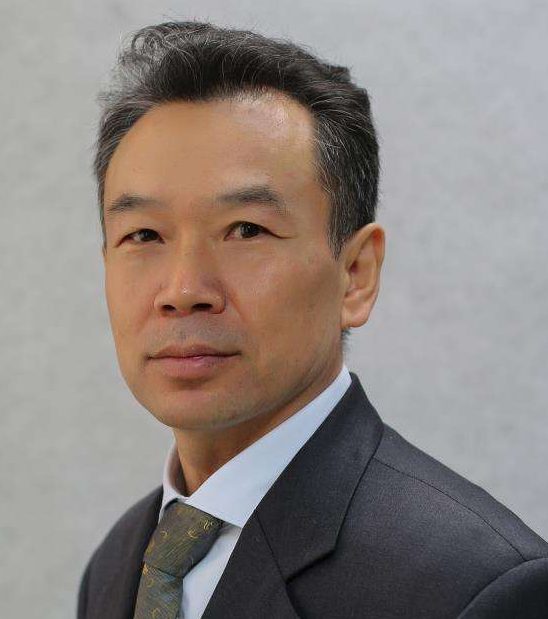In December 2018, Huawei’s chief financial officer, Meng Wanzhou, was arrested in Canada at the request of the United States. A few months later, Washington blacklisted the Chinese telecommunications giant, cutting off vital supply chains and access to American technologies. For most companies, such pressure would have been fatal. Yet Huawei not only survived but flourished.
By 2024, the company’s total revenue had grown from 603.6 billion yuan in 2017 to 862.1 billion yuan, according to a recent study, titled Can the new model of shared property rights promote better corporate finance? published in Financial Innovation. The authors, led by Professor Shixiong Cao of Minzu University of China, attribute this success not to state intervention or market luck, but to an institutional innovation called the shared property rights system.
They argue that this new framework could represent a “third property rights model”, distinct from both private and public ownership, and potentially the next stage of human economic civilisation.
A new idea in ownership
The shared property rights system rethinks how value is created and distributed inside a company. Rather than limiting ownership to capital investors, it allows engineers and knowledge workers to become technology shareholders, investing their intellectual labour instead of financial capital.
As described by the author in Futures, shared property rights are defined as a profit-sharing model where engineers invest their expertise into the company and receive a share of dividends in addition to their wages. These “technology shares” differ from traditional capital shares in two crucial ways: they cannot be transferred or inherited, and they expire automatically when an employee leaves.
This subtle yet powerful distinction means that ownership in such firms becomes dynamic and merit-based. Workers are rewarded for their ongoing intellectual contributions rather than static capital investment. For the first time, the immeasurable output of mental labour, such as ideas, creativity, and problem-solving can be recognised as an economic asset.
The method behind the findings
To examine how this model affects corporate performance, authors conducted a large-scale empirical analysis of 904 listed Chinese companies between 2009 and 2021. Using panel data regression techniques, they compared the profitability of firms implementing the shared property rights model with that of traditional joint-stock companies.
The methodology involved building a financial dataset that captured indicators such as return on assets, net profit margins, and equity ratios, while controlling for company size, industry type, and regional economic variation.
Their results were statistically significant: companies that had adopted shared property mechanisms recorded an average profitability increase of 2.1 per cent compared with their traditional counterparts. Although the figure might appear modest, the authors emphasise that most of the surveyed companies still retained two-thirds of their conventional shareholding structure. When the proportion of shared ownership approaches Huawei’s model, where technical workers hold nearly all internal shares, the effect could be considerably larger.
The study therefore provides empirical evidence that shared property rights can strengthen corporate financial performance, not through external capital injections, but by stimulating productivity and innovation from within.
Huawei’s quiet revolution
Huawei has become the most visible example of this new system in action. Founded in 1987 by Ren Zhengfei with an initial capital of just 210,000 RMB, the company grew into one of the world’s largest communications equipment suppliers. But what sets it apart is its internal ownership model.
According to Prof. Cao in his book A New Stage of Civilization: Striving for the Great Harmony, Huawei’s system grants technology shares to employees who contribute to its intellectual capital. These shares provide dividend rights but cannot be sold or inherited.
As of 2024, Ren’s personal stake in the company had fallen below one per cent, yet his year-end dividend reached 614 million RMB. Meanwhile, employees collectively received around 60.8 billion RMB in shared dividends, averaging 465,000 RMB per person, nearly twice their annual salary. The data suggest that wealth creation has been democratised without eroding efficiency.
This redistribution mechanism aligns incentives between employees and management, ensuring that innovation directly benefits those who generate it. Huawei’s model demonstrates that ownership can evolve beyond the binary of private versus public to a shared system where capital and labour cooperate rather than compete.
From Shenzhen to the nation
The shared property rights concept first appeared in Shenzhen in 1994, a period of rapid economic experimentation. Since then, the system has spread across sectors from manufacturing to technology, and the phrase “property rights incentives” has become a staple in Chinese enterprise management literature.
Prof. Cao argues that this development did not replace capitalism or socialism but created a hybrid framework that draws from both. China has preserved market mechanisms while introducing a participatory structure that rewards intellectual contribution. This approach embodies what Buzan and Cox (2013) in The Chinese Journal of International Politics described as “peaceful economic co-evolution”, gradual change through coexistence, not revolution.
Such coexistence has allowed the new and old systems to interact like branches sprouting from the same tree. The shared property system thrives within China’s mixed economy, combining state coordination, private entrepreneurship, and collective participation in ownership.
Rethinking mental labour
One of the most transformative implications of this system lies in how it values mental work. Traditional wage systems evolved around measurable physical labour: hours worked, output produced, and pieces completed. But intellectual labour, designing algorithms, managing networks, developing patents, defies such metrics.
The shared property rights model solves this by aligning ownership with creative effort. Engineers are no longer bound by rigid office schedules; they can structure their work around problem-solving rather than attendance. This autonomy fosters creativity, leading to more innovation and stronger company performance.
Cao calls this transition part of a “Great Harmony World,” in which knowledge replaces manual labour as the main productive force. Engineers and designers become stakeholders in both the economic and managerial dimensions of the firm. It marks a cultural shift from “employees” to “co-creators.”
A challenge to global capitalism
While the concept was developed in China, its implications extend far beyond national borders. Western economies have long experimented with employee stock ownership plans (ESOPs) and profit-sharing schemes, yet these still operate within the logic of transferable capital.
Shared property rights differ fundamentally because they treat intellectual contribution as temporary capital. Once a contributor departs, their ownership rights dissolve, ensuring that value distribution mirrors active participation.
In theory, this model addresses one of the structural flaws of capitalism: the concentration of wealth in passive ownership. By tying dividends to ongoing creativity, the system discourages rent-seeking and fosters continuous innovation.
If applied internationally, it could complement existing capitalist mechanisms rather than overthrow them.
This new LIT-MS, on the other hand, uses relatively low-cost components and could be retrofitted into existing mass spectrometry workflows. By lowering the entry barrier, the technology could see adoption in smaller research labs, hospitals, and even field settings.
This democratisation of high-mass analysis is no small feat. It could decentralise advanced molecular testing and foster innovation in countries and institutions where capital investment is limited.
The new stage of civilisation is not about ending capitalism, but transcending it.
Shixiong Cao
Lessons for a knowledge-driven world
The study highlights an important lesson for the twenty-first-century economy: intellectual labour is the new capital. As automation and artificial intelligence reduce the need for manual work, societies must devise new systems to reward creative and cognitive contribution.
China’s shared property rights system offers a prototype. It provides a flexible framework that could inspire other nations seeking to balance innovation with equity. However, adopting it will require cultural and institutional shifts, such as redefining ownership, adjusting corporate governance, and ensuring legal recognition of intellectual shares.
The researchers caution that while early results are promising, the system remains in its infancy. Longitudinal studies and cross-country comparisons will be essential to assess its sustainability.
Towards a new civilisation stage
Prof. Cao and his colleagues place this development within a broader philosophical narrative. In A New Stage of Civilization, he argues that human society is entering a post-private stage of development where collaboration and knowledge sharing become the primary drivers of progress.
He draws parallels with the Industrial Revolution, which did not eliminate agriculture but transformed it through mechanisation. Similarly, shared property rights will not abolish capitalism but reconfigure it to reward intellect over inheritance.
The vision of a “Great Harmony World” suggests a civilisation in which economic systems evolve alongside human creativity, allowing old and new structures to coexist. Whether this marks the dawn of a new global economic paradigm remains uncertain, but China’s experiment is already rewriting the playbook for the future of work.
Reference
Buzan, B., & Cox, M. (2013). China and the US: Comparable cases of ‘peaceful rise’?. Chinese Journal of International Politics, 6(2), 109-132. https://doi.org/10.1093/cjip/pot003
Cao, S., Xia, C., & Suo, X. (2022). Is China evolving a new model for civilization?. Futures, 135, 102878. https://DOI.org/10.1016/j.futures.2021.102878
Cao, S. (2025). A New Stage of Civilization: Striving for the Great Harmony. https://bookstore.emerald.com/a-new-stage-of-civilization-hb-9781837082599.html
Ma, Z., Li, X., Guo, J., Yang, L., Li, Y., & Cao, S. (2025). Can the new model of shared property rights promote better corporate finance? Financial Innovation. https://doi.org/10.1186/s40854-024-00725-0







